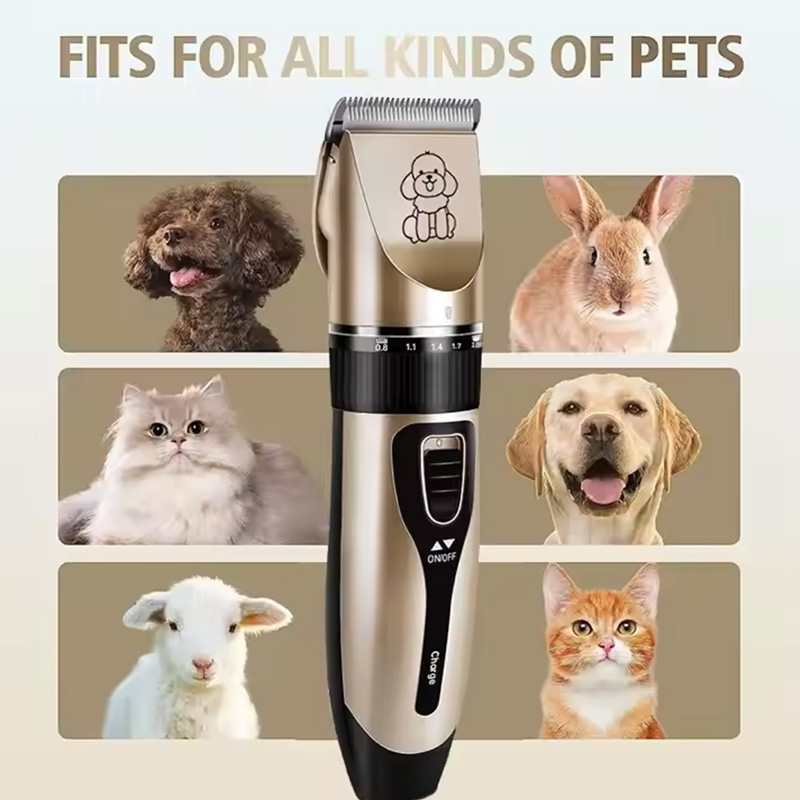
Hey there, if you’re running a home appliance business or just curious about how the industry ticks, you’ve probably felt the pinch of rising costs. Materials, energy, labor—it’s all adding up. But here’s the thing: you don’t have to cut corners on quality to keep things affordable. In modern home appliance manufacturing, smart folks are rolling out innovations that trim expenses while keeping products top-notch. We’re talking real-world tweaks that make a difference, from the factory floor to your kitchen counter.
Think about it. Home appliances like electric toothbrushes or hair clippers aren’t luxuries anymore—they’re everyday essentials. Manufacturers are under pressure to produce them efficiently without skimping on what matters: durability, safety, and performance. In this post, we’ll break down five cost-saving innovations that are shaking things up. These aren’t pie-in-the-sky ideas; they’re grounded in what’s happening right now in workshops and assembly lines. We’ll use examples from personal care gadgets, since that’s a hot spot in the sector. Stick around, and you might pick up a tip or two for your own setup.

Lean manufacturing? Yeah, it’s that straightforward approach where you strip away the fluff and focus on what adds value. In home appliance production, this means rethinking how parts come together without wasting time or resources.
Picture a factory churning out electric hair clippers. Traditionally, you’d have piles of stainless steel blades and motors sitting around, gathering dust until needed. But with lean methods, everything flows just-in-time. Components arrive exactly when assembly starts, cutting storage costs by up to 30% in some cases—I’ve heard stories from plant managers where this alone saved them thousands monthly.
The beauty is in the details. Teams map out every step, from raw material intake to final packaging. They spot bottlenecks, like unnecessary handling that could ding a ceramic blade. By standardizing processes—think documented steps for wiring a 10W motor—you reduce defects. Data shows lean setups can drop error rates by 20-40%, meaning fewer returns and happier customers using that clipper for a solid three-hour battery life.
And don’t get me started on waste. Scrap from overproduction? Gone. Instead, small batches match demand, keeping quality high since workers aren’t rushing. It’s not perfect—sometimes implementing it means a short learning curve for the crew—but the payoff? Lower overhead without touching the sharp, durable blades that make the product shine.
Energy bills can sneak up on you in manufacturing, especially with all those machines humming away. But modern tweaks are flipping the script, slashing power use while ensuring appliances perform like champs.
Take vibration motors in electric toothbrushes. Older models guzzle juice, but today’s brushless motors sip it—more efficient, longer-lasting. A toothbrush vibrating at 7,000 times per minute with an 800mAh battery? That’s not just specs; it’s real savings. Factories adopting LED lighting and smart HVAC systems see energy drops of 15-25%, according to industry chats I’ve followed.
It’s simple: audit your setup first. Where’s the leak? Maybe it’s outdated dryers in the painting line for razor handles. Swap in efficient ones, and boom—costs tumble. Plus, insulation seals keep heat in during winter runs, avoiding spikes in utility tabs.
Here’s a quirky side note: one engineer I know joked that their plant felt like a sauna before upgrades. Now? Cooler heads prevail, and so do the savings. Quality stays intact because stable temps mean consistent molding—no warped plastic that fails CE or ROHS checks. It’s a win for the planet too, but hey, we’re here for the bottom line.
| Energy-Saving Tech | Estimated Cost Reduction | Quality Impact |
| Brushless Motors | 20% on power per unit | Longer lifespan, no drop in performance |
| LED Factory Lights | 40% on lighting bills | Better visibility reduces assembly errors |
| Smart Thermostats | 15% overall energy | Consistent production environment |
Automation isn’t about robots taking over—it’s about handling the boring stuff so humans can focus on the tricky bits. In home appliance manufacturing, this innovation is a game-changer for costs.
For razors that hug facial contours, automated assembly lines trim beards on labor expenses. Sensors adjust blades precisely, cutting human error. Costs? Down by 25-35% in high-volume runs, per reports from the field. And with IoT hooked up, machines predict when a part might fail, avoiding downtime.
Sure, setup costs sting at first. But ROI hits quick—think six months for a mid-size operation. Workers shift to oversight roles, catching issues early. In pet hair trimmer production, automation handles blade sharpening, ensuring every unit trims without pulling fur.
I remember visiting a line where operators used to manually test battery life. Now, bots do it, freeing folks for creative tweaks like ergonomic grips. Quality? Upped, since consistency rules. No sacrificing the comfortable hold that makes daily use a breeze. It’s efficient, but still feels hands-on where it counts.
Materials eat up budgets, but innovative sourcing keeps costs low without cheapening the end product. We’re talking bulk deals on stainless steel for clipper blades or eco-friendly plastics for toothbrush handles.
Diversify suppliers—don’t stick with one. Negotiate for volume discounts on ceramics that last. In one scenario, a plant switched to recycled alloys, trimming material costs by 18% while hitting the same durability marks. Waste? Minimized through audits that recycle scraps.
It’s all about flow. Optimize storage so materials don’t sit idle, tying up cash. For razors, just-in-time delivery means fresh components, no oxidation issues. Quality checks remain rigorous—every batch tested for sharpness.
A fun detour: ever wonder why some appliances feel premium? It’s the materials. But sourcing smart lets you afford that without jacking prices. Industry wisdom says this approach can extend product life, like those three-hour batteries, reducing warranty claims. Solid move for long-term savings.
Breakdowns kill momentum—and wallets. Preventive maintenance flips that, scheduling checkups to catch problems early.
In appliance factories, this means routine vibes on motors or blade alignments. Tools like vibration analyzers spot wear before it halts a line producing electric pet trimmers. Downtime? Slashed by 50%, from what pros share. Costs plummet on repairs, extending gear life.
Map a calendar: weekly lube for conveyor belts, monthly deep cleans. Train teams—they spot odd noises in a 10W motor fast. Stock spares? Essential for quick swaps.
Safety improves too—no rushed fixes leading to slips. For toothbrushes, this ensures vibration stays at 7,000/minute, no dips. It’s proactive, keeping quality sky-high. Yeah, it takes planning, but the steady output? Priceless.

If you’re hunting for a reliable partner in this space, check out SUOKE Electric. Based in Yiwu, Zhejiang, they’ve been cranking out personal care appliances like electric hair clippers, toothbrushes, razors, and pet trimmers since day one. Quality’s their jam—strict controls from raw buys to final tests, with CE and ROHS stamps to boot. Their stuff hits markets in Europe, America, and Southeast Asia, thanks to solid distributor ties. Plus, they offer OEM/ODM for custom needs, bulk deals, and top-notch after-sales. It’s all about blending performance with affordability, right in line with these innovations.
Wrapping it up, these five cost-saving innovations in modern home appliance manufacturing show you can trim expenses without sacrificing quality. From lean flows to smart maintenance, they’re practical steps that boost the bottom line. Implement them bit by bit, and watch your operation hum smoother. In a world where costs climb, staying innovative keeps you competitive—and your products reliable.
Quick wins include starting with a lean audit to cut waste or swapping to energy-efficient motors. These can drop costs fast while keeping things like battery life solid at three hours for clippers.
They slash bills by 15-25% through brushless motors and smart systems, all while maintaining high vibes—like 7,000 times per minute in toothbrushes—ensuring no quality dip.
Absolutely. Begin small, like preventive checks on razors, and scale up. It levels the playing field without big upfront hits.
It cuts downtime by half, saving on repairs and keeping performance steady—think durable blades that don’t need frequent swaps.
It handles repetitive tasks, reducing labor by 25%, but keeps the human touch for quality tweaks, like ergonomic designs on trimmers.